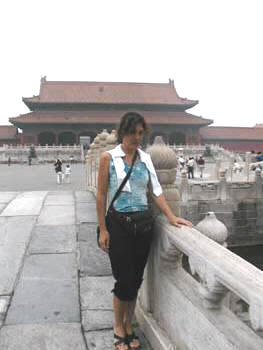 |
The Forbidden City, (Gugong) today
appears monumental, gigantic, elegant and beautiful but it
was even more beautiful, richer and fuller in the past, when
it included the Beihai Park and the Hills of Coal,
when it had all the old furniture and precious art lost
during the looting of the Anglo-British troops before and
Chiang Kaishek then. |
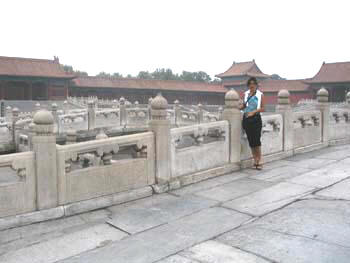 |
The halls that you visit today (about 5.5
sq. km.) Are mainly dated to the seventeenth century,
because the fires have not ever spared a long, just a spark,
a broken lantern, or the warm wind of the Gobi Desert and
lightning.
Then there were fires set by eunuchs and ministers who
are then enriched in the reconstruction.
|
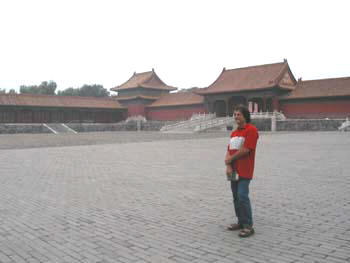 |
There are reports of a lightning strike
which reduced the building to ashes in 1559 and the
Manchu burn again in 1666, when Beijig invaded
and established their dynasty. |
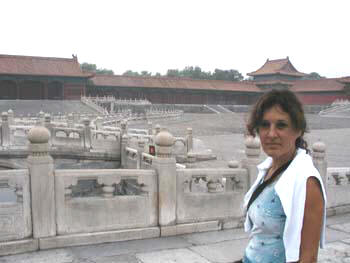 |
It is said that in 1409 Yongli
needed one million workers to build the first time about one
million square meters of the 880 hall (room 9090 - the
number nine was reserved to the emperor) and since then
teams of laborers are working on reconstruction, restoration
and maintenance. |
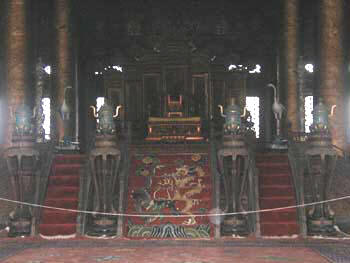 |
The Imperial Throne.
The original stone came from quarries near Beijing, and
columns, beams and girders have been cut from huge logs
laurocanforo from the forests of Yunnan and Sichuan, more
than 3300 km away.
|
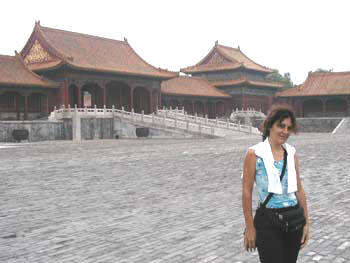 |
The palace is surrounded by a moat 52
meters wide, still full of water, where today you go in the
boat, and by walls 12 meters high (no house in Beijing had
to overcome in height), 4 towers bloated from the wonderful
architecture are posed to the four corners.
|
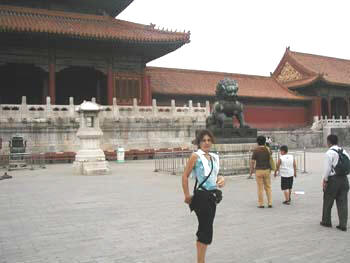 |
All the buildings have roofs made of
ceramic yellow, the color reserved for the Emperor, except
on the temples that were green, the color reserved for just
the Temples.
More important is the pavilion, most remain in an
elevated position and there are many statues that adorn the
roofs filled.
|
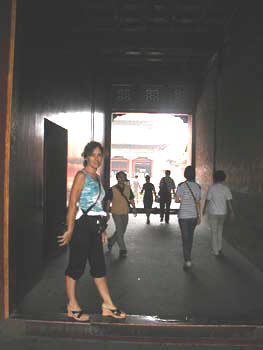 |
The Wumen Gate is the largest
of the palace, in solid wood (1421), has two doors, each
with 9 rows of 9 studs each, and is surmounted by a central
hall and two side by side on the west and east.
|
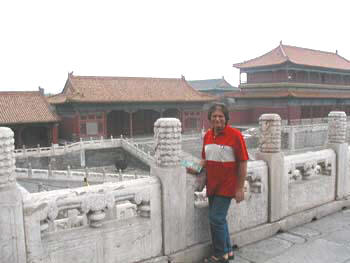 |
The Forbidden City has three axes
which run parallel from south to north, the main host side
neighborhoods populated by eunuchs, concubines, personal
service, kitchens, workshops for maintenance and minor
temples.
|
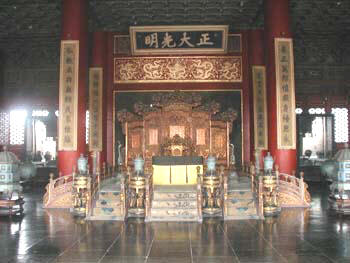 |
The throne of theLast Emperor |
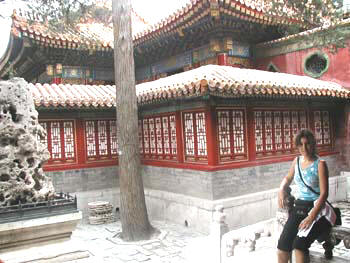 |
From the central pavilion faced the Emperor
to fall in a golden basket laws heralds provided to the
Ministry of Rites that were copied in many copies as
were the many provinces.
|
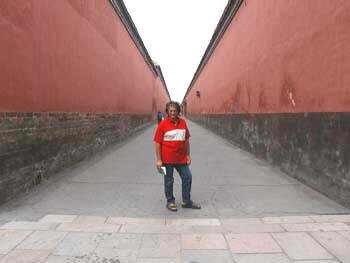 |
Here the officials offered gifts to the
Emperor in honor of the new year and the winter solstice and
these candidates will receive the State promoted higher
(imperial examinations) and the general first appointment. |
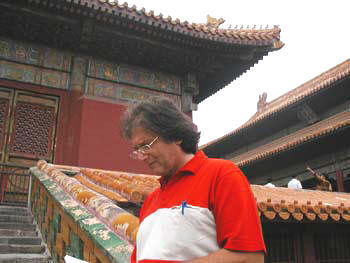 |
During the Ming Era, the Great
Hall on the left was reserved for the Crown Prince and
Small guarded at the time of Qianlong in the
36,500-volume encyclopaedia.
|
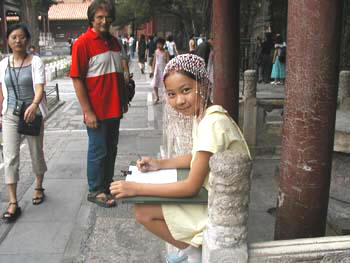 |
The jung girl will have had up to 7 years
and was making a sketch of one of the valuable and ancient
statues.
We were impressed at the high level sketch of her and
happy for the section of his hand. |
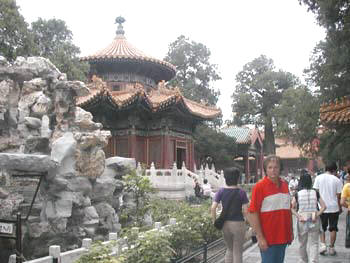 |
In the Hall of Supreme Harmony
is celebrating the great ceremonies such as coronations,
weddings and birthday imperial to the sound of music
shang composed by the Emperror Shun (2255
BC) and gained valuable litofoni beating of jade and golden
bells (now kept in the treasury Eastern palaces still in the
Forbidden City).
|
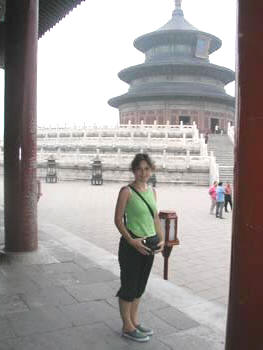 |
Crossed
the door there is a large courtyard where runs from east of
the river waters gold jumped by five bridges (the 5 Virtue).
For both sides, doors introduce the main buildings of the
two lateral axes. Cross the courtyard, a magnificent pair of
bronze lions ago ala the steps. We are on the Supreme
Gate of Harmony (a plant on the left of the building
allows you to navigate and choose your itinerary). Splendide
attic beams in blue, green and gold decorated with dragons
and Phoenician. Imposing wood columns in bay-camphor. |
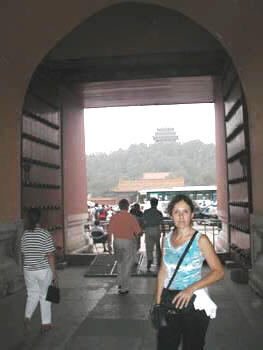 |
Passing through the Gate of Harmony
Supreme, was the guest opened the eyes show a paradise,
framed in the enormity of a courtyard that housed 100,000
people during the hearings collective.
To the right and left deposits that were imperial full of
precious pottery, bronzes, rare furs (ermine, sable, fox),
marbles and rare stones, pearls and silk and damask fabrics
artistically.
|
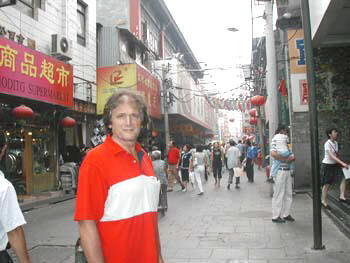 |
Beijing is now a large modern city and almost
nothing remain of the typical extension of the
traditional labyrinth of houses. |
|
 |
Popular Repubblic
of China
Zhonghua Rénmin Gòngheguó |
Area: 9,575,388 Km ²
Population: 1,273,111,000 (estimated 2001)
Density: 133 ab / Km ²
Form of government: People's Republic
Capital: Beijing (6800000 inh., 11,300,000 aggl.
Urbano)
Other cities: Shanghai 7,300,000 inhabitants.
(13,585,000 aggl. Urbano), Tianjin 9,315,000
inhabitants., Chongqing 7000000 ab., Wuhan
6200000 ab., Canton 5000000 ab., Dalian (Luda)
5,000,000 inhabitants., Mukden 4500. 000 ab.,
Chengdu 2700000 inh., Harbin 2,600,000
inhabitants., Nanjing 2500000 inh., Tsingtao
2,300,000 inhabitants., Xi'an 2,200,000
inhabitants., Anshan 2,000,000 inhabitants.,
Kunming 1900 .000 ab., Changchun, Guiyang,
Lanzhou, Taiyuan, Tangshan 1,800,000
inhabitants.; Baotou, Chengchow, Fushun, Tsinan
1600000 ab., Jilin, Tsitsihar 1500000 ab.,
Changsha, Fuzhou, Hangchow, Nanchang,
Shijiazhuang 1200000 ab., Changshu, Chaozhou,
Dongguan, Fuxian, Haicheng, Handan, Hefei,
Huainan, Huzhou, Leshan, Liupanshui, Luoyang,
Nanning, Ningbo, Pingxiang, Quzhou, Tai'an,
Tatung, Tianshui, Urumqi, Weifang , Yancheng,
Yueyang, Zaozhuang, Zhongshan, Zibo 1,000,000
inhabitants.
Ethnic groups: Han Chinese 93%, Mongols,
Koreans, Manchu, Zhuang, Hui, Uighur, Yi, Miao,
Tibetan, and another 7%
Neighboring countries: Mongolia and Russia to
NORD, Kazakhstan and Kyrgyzstan to NORTH-WEST,
Tajikistan and Afghanistan to the West, Pakistan
and India to south-west, Nepal, Bhutan, Myanmar,
Laos and Vietnam to South, North Korea to EST
Main mountains: Everest 8850 m, 8616 m K2,
Lhotse 8516 m, 8463 m Makalu, Cho Oyu 8201 m,
8068 m Gasherbrum I, Broad Peak 8047 m, 8046 m
Xixabangma Feng, Gasherbrum II 8035 meters
Main rivers: Chang Jiang (River Blue) 5800 Km,
Huang He (Yellow River) 4845 Km, 2129 Km Xi
Jiang
Main lakes: Qinghai Hu 4000 Km ², Dongting Hu
3100 Km ², Lop Nur 2500 Km ², Hulun Nur 2400 Km
², Tai Hu 2240 Km ², Poyang Hu 1800 Km ², Hanka
4400 Km ² (total, including Russia)
Main islands: Hainan 33,670 Km ²
Climate: Very different (Himalayan, Polar,
Continental, Temperate, Tropical)
Language: Mandarin (official), Yue, Wu, Hakka,
Xiang, Gan, Min, Zhuang, Hui, Yi and others
Religion: Buddhism, Confucianism, Taoism
Currency: Chinese Yuan
Special Administrative Divisions: Hong Kong
(1092 km ², 7,211,000 inhabitants.), Macau (21
km ², 454,000 inhabitants.)
China
Recipes
|